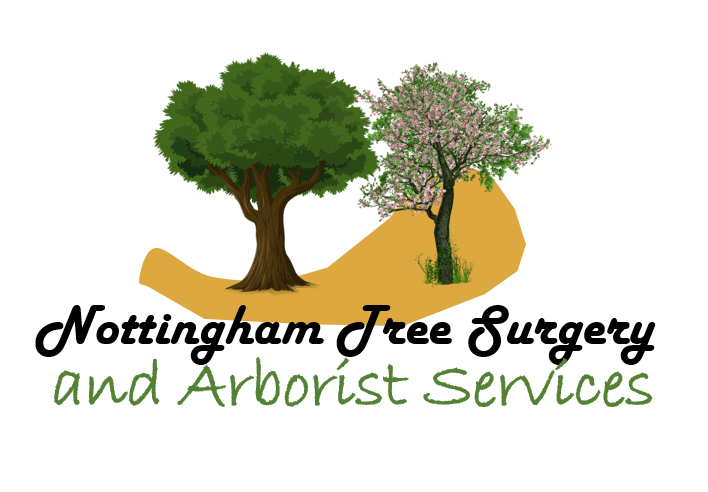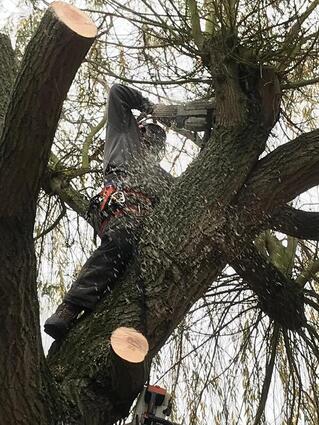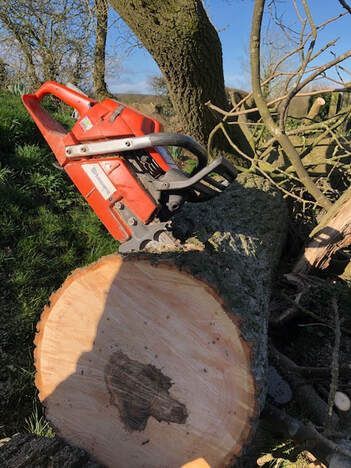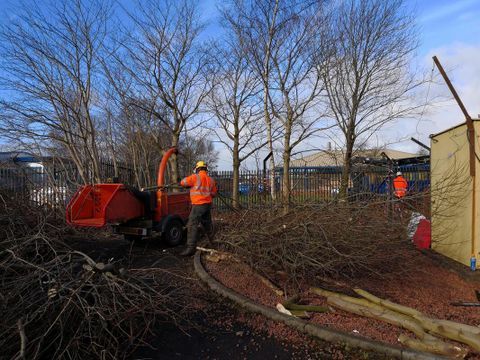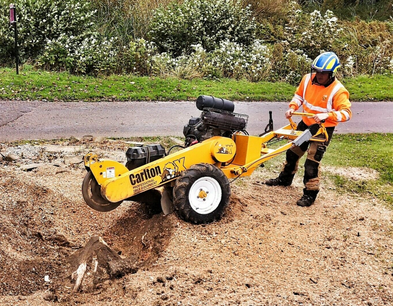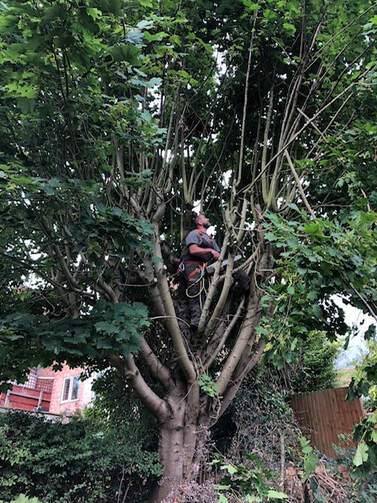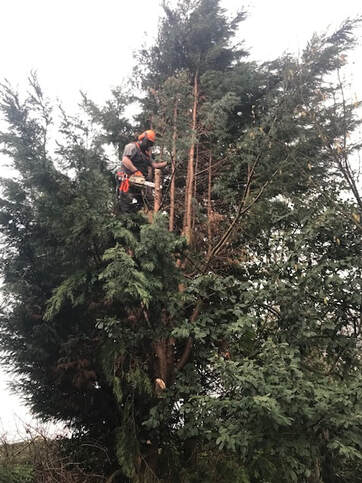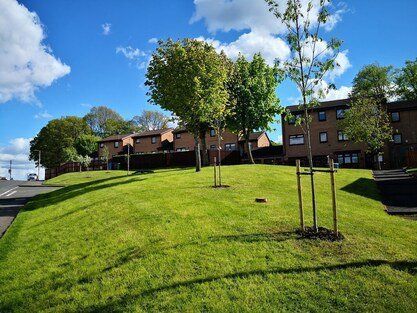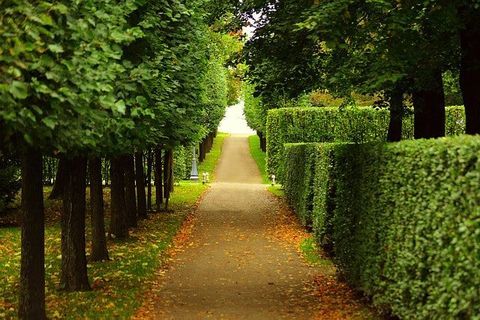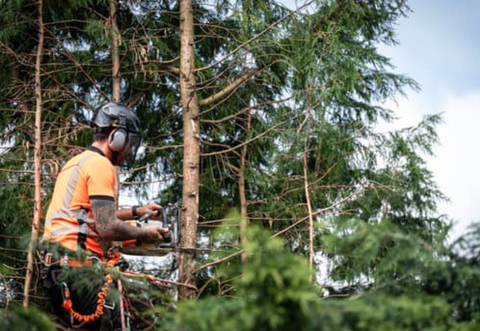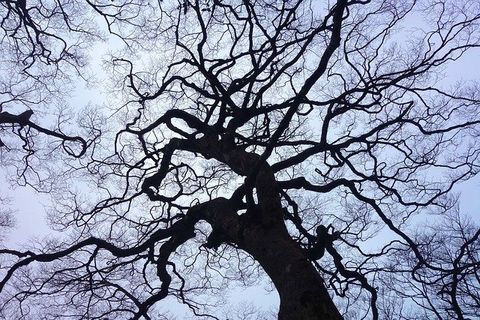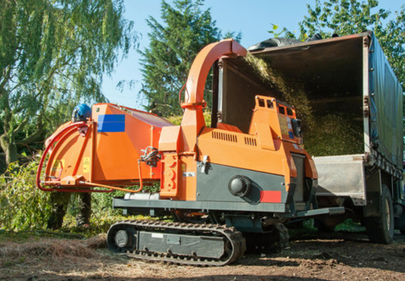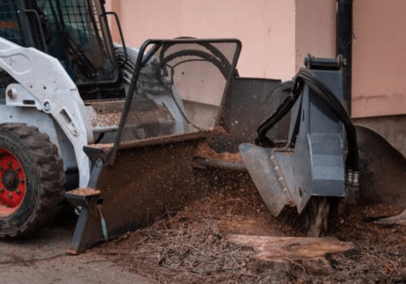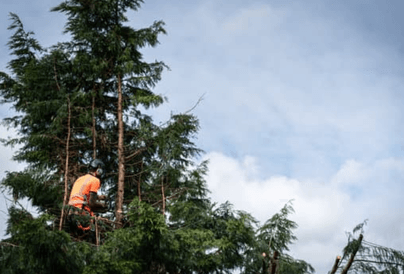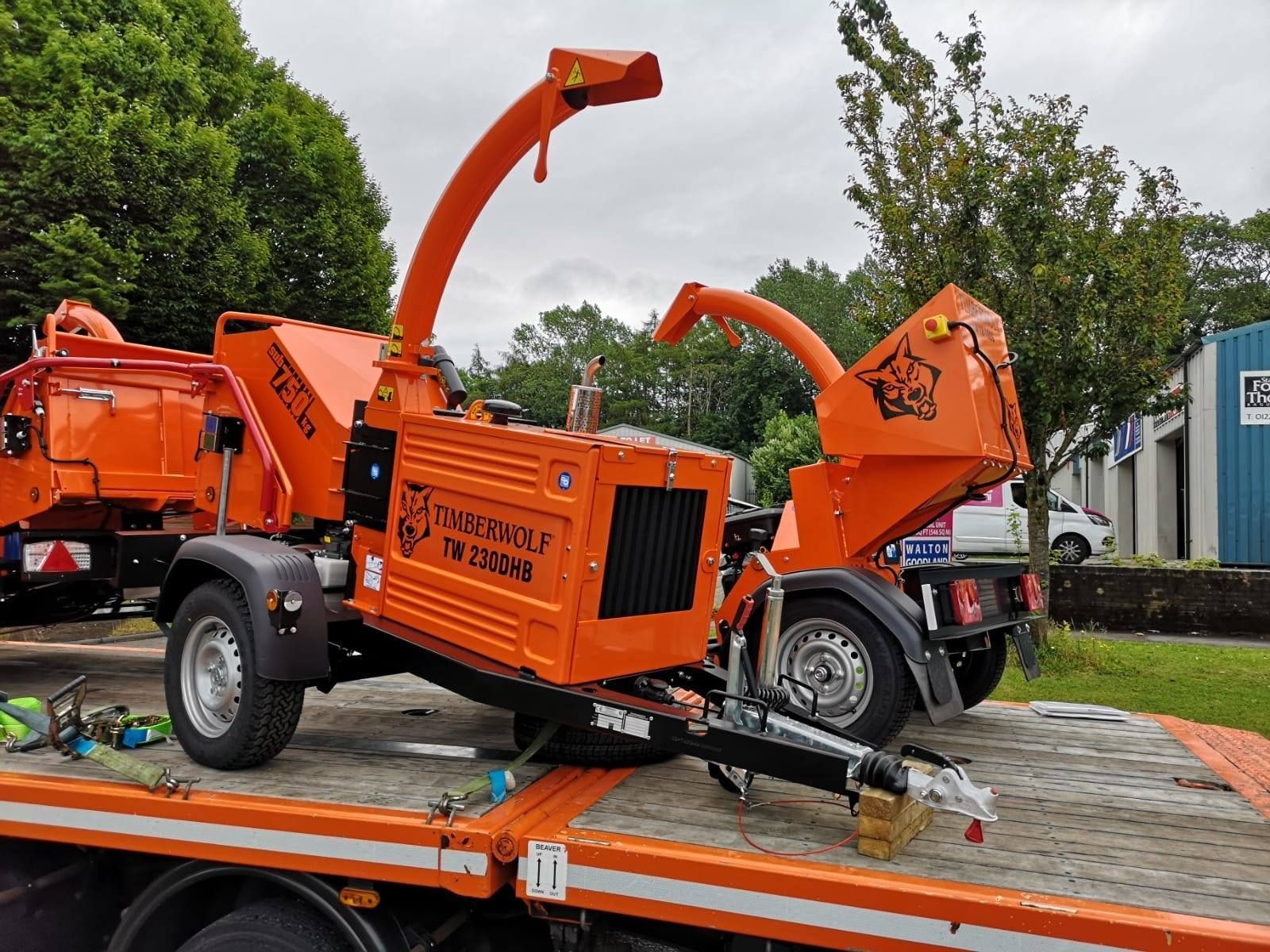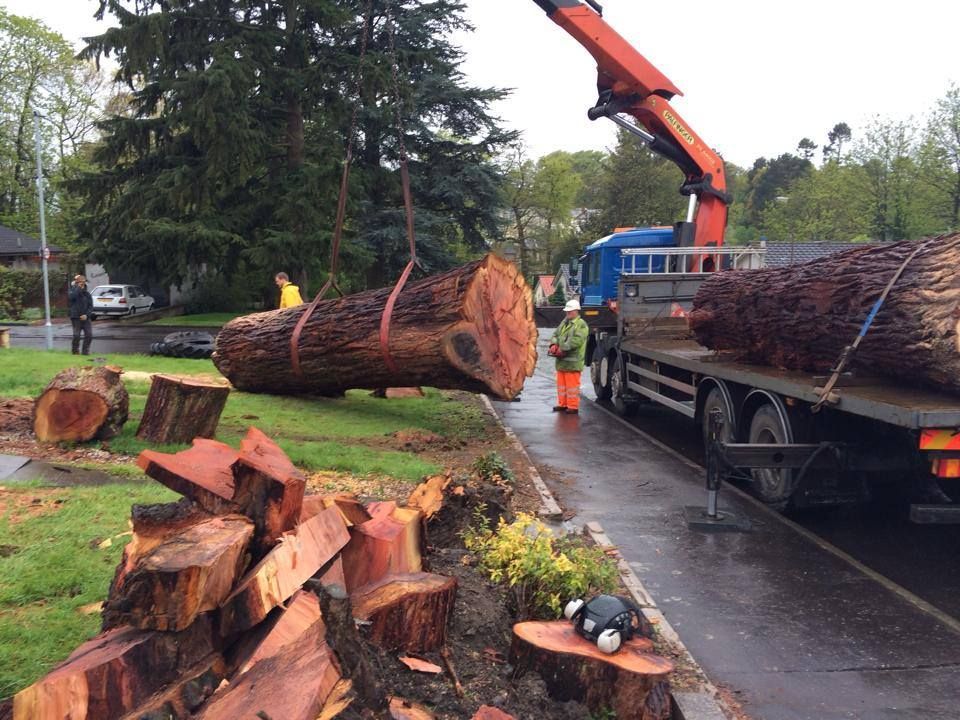Tree Surgeon Matlock - Affordable Local Tree Services
Do you need a qualified, reliable and friendly tree surgeon in Matlock?
Would you like a professional service tailored to your needs?
Would you like FREE advice & FREE no-obligation quotation?
We are committed to providing you with the best possible service. Our experience in all areas of tree care makes us experts when it comes time for your next project! We offer affordable rates and provide a secure environment during any job site or home visit, so that our customers can feel confident knowing their trees will be taken good care of until they're ready to be cut, trimmed or pruned again. If you need a problem, diseased or sick tree removed, felled or sectionally dismantled then we have the knowledge and modern equipment to carry out these tasks on all the different types of trees. We're also specially trained on how to safely do the job without damaging your house or property! So if you live in Matlock or the surrounding area, give us a call and book a FREE consultation and quote.
Residential & Commercial Tree Services that we offer around Matlock, Derbyshire
Tree Removal Service
For the customers who have a tree that may be in a difficult position, such as adjacent to a building or utility cables, then we can help to remove the tree safely and securely using our skills at taking the tree down piece by piece by a method called sectional dismantling, as straight felling the tree would cause all kinds of problems when it landed. We basically start at the top of the tree and work down, safely removing dead or diseased branches one section at a time using ropes and specialist rigging and climbing equipment for lowering the cut pieces to the ground. The cost of the tree removal will depend on factors such as the size of the tree, where it’s situated and the overall complexity of the
tree removal job.
Tree Felling & Sectional Dismantling
We always try to talk and encourage our tree surgery customers in Matlock to retain and keep their trees whenever we can, but we do understand that sometimes they have to be felled and removed, because of their instability or space and land needs to be regained due to building work and progress, or they have become dangerous and unsafe to the surrounding environment, such as houses or commercial buildings for many reasons. Because straight tree felling would be risky sometimes due to minimal surrounding open space, it makes tree felling in Matlock a bit more challenging to say the least! and it is not always straightforward and often impossible to fell a tree in one piece. This is why on some occasions we will need to
fell a tree by dismantling slowly as opposed to letting it fall.
Tree Stump Removal & Stump Grinding
Grinding stumps is the most effective way to remove them, and this is the service that we offer in Matlock. We use the latest powerful
stump grinding machine equipment so you can be sure that your stumps will be ground down quickly and effectively. Once they’re gone, there’s no reason to worry about unkempt-looking property or safety hazards. We grind the stump until it’s level with the surface of your property, which means once we leave you won’t even know that they were ever there in the first place. Our tree surgeon staff members are friendly, customer oriented professionals who take pride in their work and appreciate our customers giving us the work. We are always prompt and dependable, so you can be sure that we will arrive on time to take care of all your stump removal needs.
Tree Trimming & Pruning
Crown Raising / Crown Lifting
Tree crown lifting is also known as "Raising Crowns" It is a proactive service used to prevent future damage to your trees and property by re-positioning the tree crowns to a predetermined height above their current location after sometimes after construction or landscaping work has been completed. The purpose of this service is usually to maintain a clear path for vehicular traffic below, avoid obstructions that could potentially interfere with machinery operating beneath it, or to ensure that the branches do not interfere with electric power lines located above it. Also this
tree trimming service is completed on residential and commercial trees for aesthetic reasons, as the trees look so much better.
Wood Chipping In Matlock
Convenient On-Site wood chipping processing.
We bring our commercial-grade wood chippers directly to your property, eliminating the need for skip hire or multiple trips to disposal sites. Our mobile equipment can handle branches and timber up to 8 inches in diameter, efficiently converting bulky waste into manageable wood chips.
Wood chipping is one of the most environmentally sustainable methods of handling tree waste. Rather than sending organic material to landfill, we transform it into valuable mulch that can be reused in your garden or responsibly recycled.
Crown Thinning / Crown Reduction
Tree crown reduction starts with an assessment by one of our certified arborists to determine if pruning is necessary and what type of cut should be made on each branch. A pruning plan is also created during this time. Then, a fine cut line is determined by sawing the branches from 1/4 to 3/4 of their diameter. The goal here is not to completely remove the branch, but rather just take enough away so that the remaining portion will be structurally sufficient for proper tree health and stability. In some cases, trees may need less than 25% removed while others may need more than 75%. This percentage varies depending on factors such as tree species or disease diagnosis.
Additionally, smaller limbs closer to the trunk are sometimes left in place so they can support larger branches farther out on a limb which have been pruned off. These limbs must be well attached to the trunk of the tree in order to support weighty branches. The main reason for performing crown reduction is to give the tree a more desirable structure. This can be accomplished through crown reduction or by pruning certain limbs.
Pollarding & Coppicing
When trees are pollarded, their branches are cut way back to the trunk or a major branch. This is most often done with oak and ash trees . A tree that has been pollarded will regrow several small branches instead of just one large branch.
Pollarding is usually done for three reasons: to keep trees from getting too tall and dangerous; to provide firewood; and to provide a food source for animals such as deer. Pollarding also makes it easier for farmers to gather fruit from the top of tall trees. In some parts of England, farmers used to pollard apple trees every seven years on May 25th - St John's Day... Some national parks still allow people to pollard certain types of oaks in some areas. We cannot pollard every species of tree, please call for details.
Frequently Asked Questions About Our Tree Surgery Business in Matlock
How much does a tree surgeon cost in Matlock?
When it comes to the cost of hiring a tree surgeon, several factors will influence the price you pay. These include:
- The size and type of trees on your property
- The complexity and depth of work required
- Location (tree surgeons in urban areas generally charge more than those in rural locations)
- Whether specialised equipment is needed
- The qualifications and experience of the tree surgeon
In general, a basic pruning job may cost between £200 - £500 per tree, while more complex jobs such as removing trees or major pruning can range anywhere from £500-£2,000. For very large trees or specialty work, you should expect to pay up to £5,000 or more.
Why do I need to call your tree surgeons?
Our tree surgeons are highly skilled and experienced professionals who can help you maintain the health of your trees. They are trained to safely remove and cut down dead, diseased, damaged, or dangerous branches, as well as to prune trees for shape and size. They can also provide advice on how to care for your trees to ensure their health and well-being.
Our professional tree experts can also help with the removal of entire trees, which requires specialised equipment and safety precautions. In addition, tree surgeons can provide emergency tree care services such as storm damage repair and removal of hazardous trees. Ultimately, employing a tree surgeon is essential for the health and safety of your trees, as well as your own safety. It is important to ensure that the tree surgeon you hire has the necessary qualifications, experience, and insurance to carry out their work.
Do I require permission to have work carried out on my trees?
In the UK, it is important to check if you need permission before carrying out any work on your trees. Generally, if your tree is under the protection of a Tree Preservation Order (TPO), or located within a Conservation Area, you will need to make an application for permission before any work can be carried out. You should contact your local council in the first instance to find out if any of your trees are subject to a TPO or situated in a Conservation Area.
If you do require permission, an application should be made to the local authority and it is best practice to seek advice from a qualified arboricultural professional. Your local council will provide you with details of the necessary application forms and may be able to provide assistance with the process.
In certain cases, such as where trees pose a risk to public safety or need to be removed for development reasons, permission may be granted without delay. It is important to bear in mind, however, that the local council will consider a variety of factors when making decisions about tree works and may still require an application.
When is the best time of year to have work done to my trees and hedges?
The timing of tree and hedge maintenance is largely dependent on the type of trees or hedges you have as well as your local climate. Generally speaking, late winter or early spring is the best time to trim trees and hedges in most areas, when they are still dormant but before new growth starts to sprout. This allows for more control over the shape of the hedge or tree as it is cut back. Pruning and trimming during this time will also ensure that any wounds inflicted in the process have adequate time to heal before the growing season begins.
Hedges, in particular, should be trimmed once or twice each year, and late winter/early spring is the best time to do this. Additionally, an annual inspection of your trees and hedges should be done in late winter or early spring to identify any potential problems before they become serious. The exception is if your trees and hedges are flowering, in which case you should wait until after the flowering season has finished. This will maximise the number of flowers that the plant produces and help to keep your trees and hedges looking their best.
Can trees damage my property?
Yes, trees can damage your property if they are not properly cared for. When a tree grows too close to a home or outbuilding, it can cause damage to the structure of the building and its foundation. Trees can also cause damage to roofs, driveways, and pathways as their roots grow beneath them. Unmanaged trees can become diseased, which can lead to weak branches that can cause damage to property when they fall.
Additionally, large overhanging branches can drop limbs on your property during storms, leading to damage. It is important to properly maintain and prune trees in order to minimise their risk of causing damage to your property. Regular inspections and maintenance should be performed by a certified arborist to ensure the health of your trees and to keep your property safe from potential damage.
If a tree is found to be diseased or posed too great of a risk, it may need to be removed to protect your property. Ultimately, the answer is that yes, trees can damage your property if they are not properly cared for.
Do mature trees need special care and attention?
Yes, mature trees need special care. Mature trees are more susceptible to environmental conditions and can be more difficult to maintain than younger trees. In order to keep a mature tree healthy, it is important to regularly inspect the tree for signs of disease or damage and provide appropriate treatments if necessary.
Additionally, mature trees should be given adequate water and fertiliser to ensure proper nutrition and growth. Pruning is also important for mature trees; this helps the tree stay in a healthy shape and can prevent it from becoming overgrown or damaged.
With appropriate care, mature trees can remain strong and healthy for many years. It is important to note that mature trees may require additional attention and care than younger trees; however, with the right amount of care and maintenance, mature trees can live for many years and provide beauty and value to a landscape.
Hedge Cutting, Hedge Trimming and Maintenance
Hedges provide many benefits to homeowners. They act as windbreakers, privacy shields and noise barriers, depending on the plant species used. Additionally, they serve as vital soil stabilisers by preventing erosion and storm water runoff. The problem with maintaining hedges is that it requires the expertise of professionals because these difficult-to-handle shrubs grow quickly and large over short periods of time. We offer professional hedge trimming services to our customers. Our
hedgerow services also includes removing or cutting down hedges if they become overgrown, out of hand or too unruly. We can remove whole hedgerows or plant new hedges if required. If you would like an ongoing hedge maintenance contract to keep your hedges in check, either residential or commercial, then please call for a competitive price.
Commercial Tree Works in Matlock
Professional Arboricultural Solutions for Matlock Businesses
Nottingham Tree Surgery and Arborist Services is proud to extend our expert commercial tree care to Matlock and the surrounding Derbyshire Dales area. With Matlock's unique landscape combining the natural beauty of the Peak District with thriving commercial centres, we understand the specialised needs of local businesses when it comes to professional tree management.
Matlock's Commercial Tree Care Specialists
Situated in the stunning Derwent Valley, Matlock businesses face distinctive challenges with their tree management needs. The area's steep hillsides, limestone terrain, and proximity to the River Derwent create specific arboricultural requirements that our expert Matlock team is uniquely equipped to address.
From the historic properties along Dale Road to the modern business developments in Matlock Green, we provide tailored tree services that consider both commercial practicality and environmental responsibility.
Our Matlock commercial team brings extensive local knowledge of the area's native species, soil conditions, and microclimate variations.
We understand the importance of maintaining Matlock's natural beauty while ensuring commercial properties remain safe, accessible, and visually appealing.
Comprehensive Commercial Services for Matlock Businesses
We offer a complete range of commercial tree services specifically designed for Matlock's business community:
- Tourism and Hospitality Support: Specialized tree management for Matlock's hotels, guest houses, and visitor attractions, enhancing curb appeal while ensuring visitor safety
- Retail and High Street Services: Maintaining visibility and access for commercial properties in Matlock town center
- Industrial and Business Park Maintenance: Regular maintenance programs for Matlock's industrial zones and business parks
- Historic Property Specialist Care: Expert management of mature trees on Matlock's many historic commercial properties
- Risk Assessment and Safety Compliance: Comprehensive tree safety surveys tailored to Matlock's unique terrain and weather patterns
Why Matlock Businesses Choose Our Services
Our established presence in Matlock has made us the trusted choice for commercial tree care throughout the area. We combine robust technical expertise with a genuine understanding of local business needs. Our Matlock commercial clients appreciate our:
- Local knowledge of Matlock's unique landscape and tree species
- Prompt response times throughout the Derbyshire Dales
- Detailed documentation for insurance and compliance purposes
- Flexible scheduling to minimize business disruption
- Cost-effective solutions tailored to commercial budgets
Contact Our Matlock Commercial Team
For professional commercial tree services throughout Matlock and the surrounding areas, contact our dedicated Matlock team for a free consultation and site assessment.
Matlock/Derby Office: 01332-327311
Email: treesurgerynottingham@gmail.com
Serving commercial clients throughout Matlock, Matlock Bath, Darley Dale, Wirksworth, Bakewell, and the wider Derbyshire Dales area.
Frequently Asked Questions About Our Tree Surgery Business in Matlock
How much does a tree surgeon cost in Matlock?
When it comes to the cost of hiring a tree surgeon, several factors will influence the price you pay. These include:
- The size and type of trees on your property
- The complexity and depth of work required
- Location (tree surgeons in urban areas generally charge more than those in rural locations)
- Whether specialised equipment is needed
- The qualifications and experience of the tree surgeon
In general, a basic pruning job may cost between £200 - £500 per tree, while more complex jobs such as removing trees or major pruning can range anywhere from £500-£2,000. For very large trees or specialty work, you should expect to pay up to £5,000 or more.
Why do I need to call your tree surgeons?
Our tree surgeons are highly skilled and experienced professionals who can help you maintain the health of your trees. They are trained to safely remove and cut down dead, diseased, damaged, or dangerous branches, as well as to prune trees for shape and size. They can also provide advice on how to care for your trees to ensure their health and well-being.
Our professional tree experts can also help with the removal of entire trees, which requires specialised equipment and safety precautions. In addition, tree surgeons can provide emergency tree care services such as storm damage repair and removal of hazardous trees. Ultimately, employing a tree surgeon is essential for the health and safety of your trees, as well as your own safety. It is important to ensure that the tree surgeon you hire has the necessary qualifications, experience, and insurance to carry out their work.
Do I require permission to have work carried out on my trees?
In the UK, it is important to check if you need permission before carrying out any work on your trees. Generally, if your tree is under the protection of a Tree Preservation Order (TPO), or located within a Conservation Area, you will need to make an application for permission before any work can be carried out. You should contact your local council in the first instance to find out if any of your trees are subject to a TPO or situated in a Conservation Area.
If you do require permission, an application should be made to the local authority and it is best practice to seek advice from a qualified arboricultural professional. Your local council will provide you with details of the necessary application forms and may be able to provide assistance with the process.
In certain cases, such as where trees pose a risk to public safety or need to be removed for development reasons, permission may be granted without delay. It is important to bear in mind, however, that the local council will consider a variety of factors when making decisions about tree works and may still require an application.
When is the best time of year to have work done to my trees and hedges?
The timing of tree and hedge maintenance is largely dependent on the type of trees or hedges you have as well as your local climate. Generally speaking, late winter or early spring is the best time to trim trees and hedges in most areas, when they are still dormant but before new growth starts to sprout. This allows for more control over the shape of the hedge or tree as it is cut back. Pruning and trimming during this time will also ensure that any wounds inflicted in the process have adequate time to heal before the growing season begins.
Hedges, in particular, should be trimmed once or twice each year, and late winter/early spring is the best time to do this. Additionally, an annual inspection of your trees and hedges should be done in late winter or early spring to identify any potential problems before they become serious. The exception is if your trees and hedges are flowering, in which case you should wait until after the flowering season has finished. This will maximise the number of flowers that the plant produces and help to keep your trees and hedges looking their best.
Can trees damage my property?
Yes, trees can damage your property if they are not properly cared for. When a tree grows too close to a home or outbuilding, it can cause damage to the structure of the building and its foundation. Trees can also cause damage to roofs, driveways, and pathways as their roots grow beneath them. Unmanaged trees can become diseased, which can lead to weak branches that can cause damage to property when they fall.
Additionally, large overhanging branches can drop limbs on your property during storms, leading to damage. It is important to properly maintain and prune trees in order to minimise their risk of causing damage to your property. Regular inspections and maintenance should be performed by a certified arborist to ensure the health of your trees and to keep your property safe from potential damage.
If a tree is found to be diseased or posed too great of a risk, it may need to be removed to protect your property. Ultimately, the answer is that yes, trees can damage your property if they are not properly cared for.
Do mature trees need special care and attention?
Yes, mature trees need special care. Mature trees are more susceptible to environmental conditions and can be more difficult to maintain than younger trees. In order to keep a mature tree healthy, it is important to regularly inspect the tree for signs of disease or damage and provide appropriate treatments if necessary.
Additionally, mature trees should be given adequate water and fertiliser to ensure proper nutrition and growth. Pruning is also important for mature trees; this helps the tree stay in a healthy shape and can prevent it from becoming overgrown or damaged.
With appropriate care, mature trees can remain strong and healthy for many years. It is important to note that mature trees may require additional attention and care than younger trees; however, with the right amount of care and maintenance, mature trees can live for many years and provide beauty and value to a landscape.
Local Towns & Villages we serve around the Matlock area of Derbyshire
Matlock - DE4
- Central Matlock and immediate surroundings
Matlock Bath - DE4
- Distance from Matlock: Approximately 1-2 miles south
Bakewell - DE45
- Distance from Matlock: Approximately 8 miles west
Wirksworth - DE4
- Distance from Matlock: Approximately 4 miles southwest
Darley Dale - DE4
- Distance from Matlock: Immediately adjacent (1-2 miles north)
Cromford - DE4
- Distance from Matlock: Approximately 2-3 miles south
Belper - DE56
- Distance from Matlock: Approximately 7-8 miles southeast
Alfreton - DE55
- Distance from Matlock: Approximately 8-9 miles east
Chesterfield - S40, S41
- Distance from Matlock: Approximately 10-11 miles northeast
Ripley - DE5
- Distance from Matlock: Approximately 10 miles southeast
Ashbourne - DE6
- Distance from Matlock: Approximately 12 miles southwest
Buxton - SK17
- Distance from Matlock: Approximately 18 miles northwest
Derby - DE1, DE22, DE23 (various areas)
- Distance from Matlock: Approximately 16-17 miles south
Mansfield - NG18, NG19
- Distance from Matlock: Approximately 18-20 miles east
